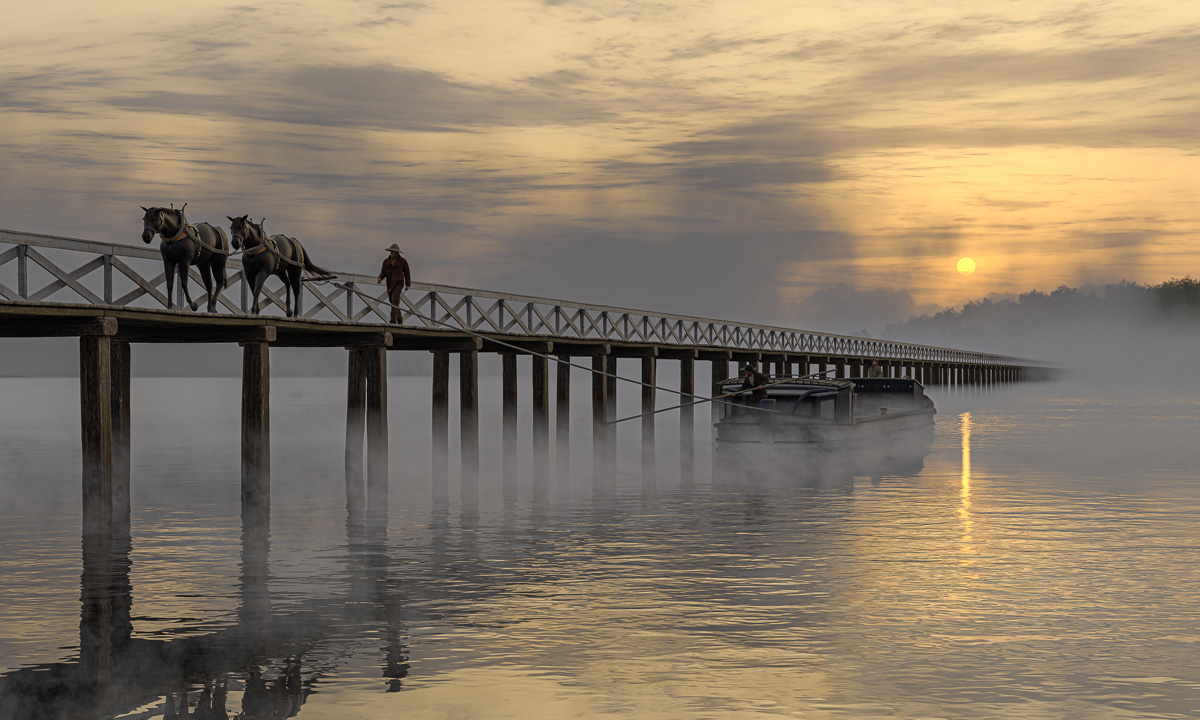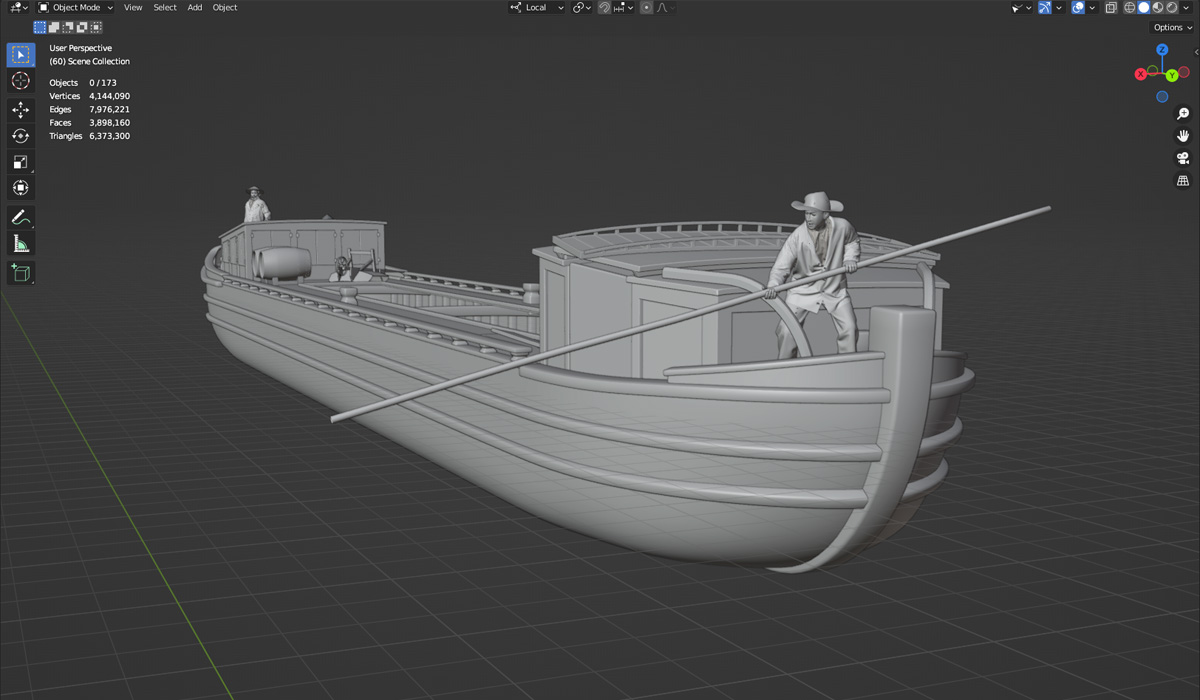
The towpath bridge at Montezuma stretches across the sluggish waters of the Seneca River in the early morning hours of June 15, 1824. It has been in regular use since the previous season, allowing packets, freighters, and other Erie Canal boats to navigate the entire distance from Albany to Brockport, about twenty miles west of Rochester.
This slackwater crossing carried the Erie Canal west to the margins of the Cayuga marshes, where water levels were at the mercy of the river and the nearby Canandaigua Outlet. Traffic on the canal would be plagued by unusually low water later that year.
As the Canal Commissioners were to report, “[s]ome inconvenience was, however, experienced in crossing the Cayuga marshes . . . on the subsidence of these streams in the latter part of the season, the water in the canal was reduced below its proper height, and loaded boats frequently detained.”
A guard lock under construction on the west bank would help maintain the canal’s water level across the marsh. But problems at the slackwater crossing itself dogged engineers until it could be replaced by an aqueduct in 1856.

The freighter in the scene is a model of one of the early 19th-century canal boats recently discovered at the bottom of Seneca Lake. The bridge is based on a description published in an early canal commissioners’ report and an 1825 watercolor sketch by John Henry Hopkins. Its southwest-to-northeast alignment, and a date near summer solstice, allowed me to indulge in a long-wished-for opportunity to set a scene at sunrise.
Another river crossing will be the theme of the next scene, one set further west and, for the canal engineers, much more ambitious.


I love the mood this painting evokes. You can almost feel the cool air gently blowing around you, hear the clopping of the horses hooves on the bridge and lapping of the waters as the boat makes its way. And the information provided is so interesting! A wonderful picture!
Thanks, Barb! I appreciate the comment!